From 28 September until 2 October, SolarPower Europe held its annual Summit. Fatih Birol, Director of the International Energy Agency (IEA), set the tone: he announced that in the IEA’s upcoming global scenarios report, solar is expected to become the number one energy source in Europe within 5 years.
With this in mind, EuropeOn Secretary General Julie Beaufils moderated a panel session on the 1st October on “Deploying innovative solar solutions in the Renovation Wave”, in the (digital) presence of Hans Van Steen (Director at DG ENER), MEP Ciaran Cuffe, Eugenio Quintieri (Secretary General of the European Builders Confederation -EBC), Gabriel Delmer (Akuo Energy) and Léopold Coppieters (Skysun).
The EU Renovation Wave represents a turning point on the road to achieving the European Green Deal. Integrated Renovation Programmes (IRPs), as proposed by the European Parliament, have the potential to eliminate approximately 40% of the EU’s emissions, by powering European buildings with renewable energy, ensuring a high-level of energy efficiency and providing demand-side flexibility. By taking advantage of the enormous solar rooftop potential in the EU, we could decarbonise 25% of the EU’s current electricity consumption.
This is of course of crucial interest for EuropeOn who represents the professionals in charge of activating these changes, whether it’s connecting solar panels & technologies with the build environment, advising end-users on the smart tools that can make their indoor life easier and more energy-efficient, and so on.
Director Van Steen gave a few hints regarding the content of the upcoming Renovation Wave (expected for the 14th of October). He reminded all participants of the Commission’s ambition to double renovation rates across the EU while improving energy efficiency and promoting smart buildings. He also insisted on the versatility of the Renovation Wave, as it is meant to tackle many policies at once: renovating social housing, decarbonising, creating growth and jobs, deploying renewables -in particular solar, contributing to the skills agenda, etc. He confirmed that this initiative could lead to revise the Directive on Energy efficiency in buildings (EPBD). Finally, he stressed that this initiative could not rely only on the EU and should be implemented at the relevant level – clearly pointing out Member States.
MEP Ciaran Cuffe then presented the report he was responsible for at the European Parliament, to shape the Parliament’s position on the Renovation Wave. This report was adopted in plenary session earlier in September with an outstanding majority, demonstrating a shared vision among MEPs. In this very comprehensive report, the Parliament is pushing forward a Pan-European Rooftop Programme, in order to equip as many roofs as possible in Europe with PV. With such high ambition, it is estimated that approximately 680 TWh per annum could be produced and that we could save up to 7 million tons of CO2 each year. The Parliament also advocates in favour of binding targets for Member States to implement ambitious renovation programmes.
Eugenio Quintieri, Secretary General of the European Builders Confederation -EBC, also agreed on the great potential of the Renovation Wave to achieve several core objectives of the EU, in particular a sustainable recovery. As a supporter of EuropeOn’s Skills4Climate campaign, he raised awareness on the lack of skilled workers to switch on ambitious renovations in Europe. He insisted on the need for visibility and predictability in the current troubled times. In this regard, he expressed strong doubts about the opportunity to revise EPBD, which was revised 2 years ago and is still not implemented (or partly) in several EU Member States. In order to double renovation rates, the building sector will need steady financial support from the EU. Indeed, the Parliament’s report on the Renovation Wave underlines that at least EUR 75 billion a year in EU incentives (in addition to national and regional level and private investment) is required to ensure deep renovations towards a highly energy-efficient and decarbonised building stock by 2050.
The final discussion was focused on innovation. While solar manufacturing is mainly done outside Europe (even though there are ongoing discussion to relocate it here), some promising innovations, addressing technology, aesthetics or business models, are flourishing in the EU. This session was the occasion to present two “made in Europe” projects: Akuo Energy (French) and Skysun (Belgian). Akuo Energy is a leading company in BIPV (building-integrated photovoltaic). This technology allows for substituting roofs and facades with PV, and for giving PV more aesthetics and creativity. However BIPV has so far mainly been adopted by big companies and city councils, i.e. “big actors”. This is why initiatives such as the Renovation Wave can help deploy and democratise this technology. In this respect, M. Delmer insisted on the fact that public support is not only about funding: it’s also about highlighting the most promising innovations and turn them into concrete projects. This issue of financing projects is convincingly tackled by companies such as Skysun which developed a large spectrum of business models to incentivize people and companies to invest in solar panels, for example by renting the technology.
